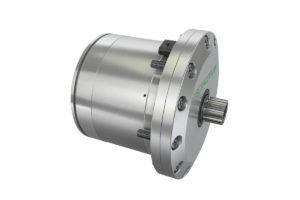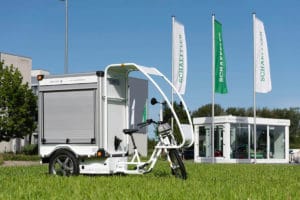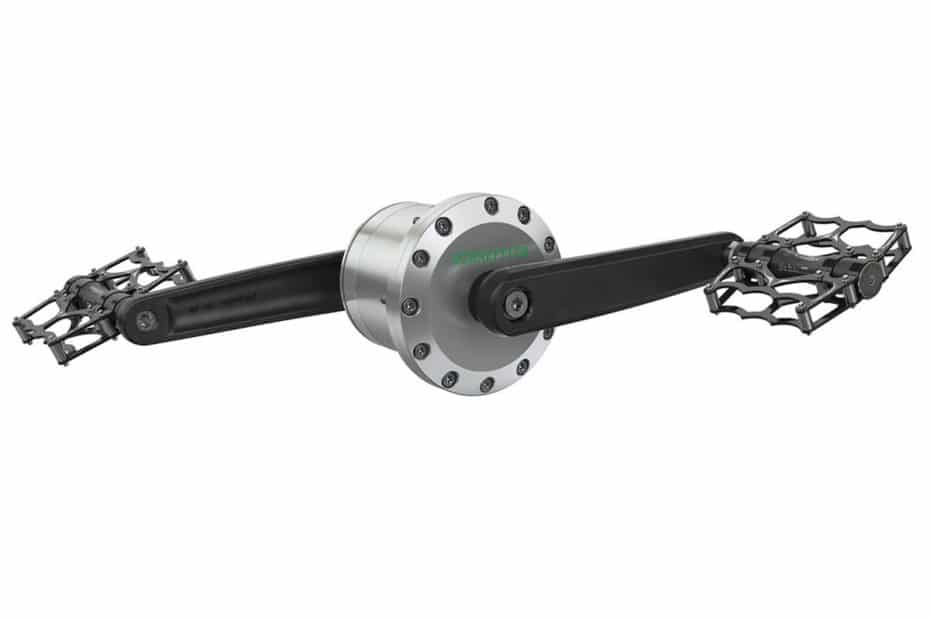Currently, there is a lot of movement in the ebike market. This can be seen, among other things, in the large number of different new drive systems that have been presented in the past two years. At this year’s Eurobike in Friedrichshafen a few months ago, another system was on show in which the power transmission works completely without a bicycle chain or belt.
Cycling without a chain? Does that sound familiar to you? That’s right. Only last month we reported on the Mocci from CIP Mobility, a solution that also relies on a serial hybrid drive. This is exactly the approach taken by Free Drive, a new drive system developed by Schaeffler and Heinzmann. In this project, one of Germany’s leading companies from the automotive sector and a renowned specialist for engines and transmissions are working together. The expectations for the result of the cooperation are correspondingly high.
Competence squared
The two manufacturers are by no means blank pages within the bicycle industry. Schaeffler already launched the “Velomatic” mechatronic shifting system in 2016. Manufacturers such as Raleigh and Kalkhoff equipped selected models of their ebikes with it for a while. Some of them are certainly still riding on our roads. Heinzmann, on the other hand, is responsible for several motors for pedelecs, also in the field of e-cargo bikes.
Now the two are doing business together on the Free Drive. This is a so-called “bike-by-wire” system. The drive therefore functions entirely without a classic drive train with chain. Instead, you drive a generator with your pedalling. The generator provides even resistance to the pedal and absorbs your pedalling power at the same time. This means that it converts the mechanical energy generated by pedalling into electrical energy. A cable transmits this energy to a motor integrated in the rear wheel hub. There it is converted back into mechanical energy.

The compactness of the Free Drive’s generator is demonstrated by its Q-factor of 138 millimetres. Both pedals are therefore as close together as on a regular bike.
Greater effort, greater range
According to the manufacturers, the system can store surplus energy in a battery. So thanks to recuperation, all the extra power you invest when pedalling, together with the energy from braking and going downhill, is fed back and extends the range of the vehicle. Let no one say that efforts are not worthwhile.
From the available visuals, it is clear that at least the generator is quite compact. This should facilitate future integration into bicycles. At the moment, the Free Drive is still hanging around in a vacuum. In other words, the drive exists, but there is no bike equipped with it yet. At least not one that is about to enter series production.
Two, three or four wheels?
In September, Schaeffler and Heinzmann presented a prototype at the Eurobike. Interested parties were able to test a three-wheeled cargo bike called “Bring” from the Bavarian manufacturer Bayk for a few laps on the course. The example certainly gives a taste of the potential applications Schaeffler and Heinzmann themselves are thinking of. According to their assessment, the drive system is particularly suitable for multi-track cargo bicycles as well as vehicles in the rehabilitation sector. Due to its robustness and low maintenance requirements, there are also thoughts of entering the bikesharing market. But then probably rather as a single-track variant.

Bicycle manufacturer Bay is the third southern German partner in the alliance with its “Bring” e-cargo bike.
Hot test phase underway
When asked, Schaeffler confirms that it wants to leave the construction of complete bicycles or cargo bikes to others. The company’s own focus is clearly on the actual drive system. Selected customers have now received a few samples of the Free Drive to equip demonstrators and pilot vehicles with. By mid-2022, the resulting findings are to be incorporated into the finalisation of the product. By the time it reaches the series production stage, one or two details may apparently have changed.
According to Schaeffler, there is “a large list of interested parties”. Together with Heinzmann, the company is in concrete talks with them. Some of the customers are already planning to start production next year.
Let’s see when there will be more precise statements on this and, above all, by whom! In any case, the example of Free Drive shows how technology from different vehicles, in this case cars and bicycles, come together to form modern mobility solutions. “The effective implementation of such new mobility concepts requires mechatronic technologies at component and system level. Our decades of expertise in vehicle mechatronics helped us develop the Free Drive by transferring it to the two-wheeler segment,” affirms Daniel Pokorny, Head of Communications Technology, Innovation & Digitalisation at Schaeffler.
Pictures: Schaeffler Technologies AG & Co. KG


